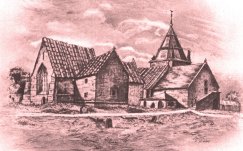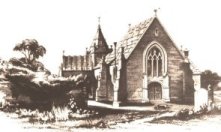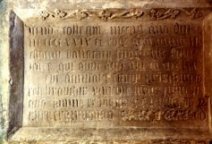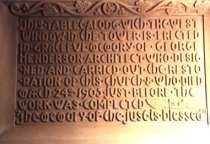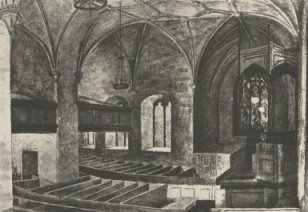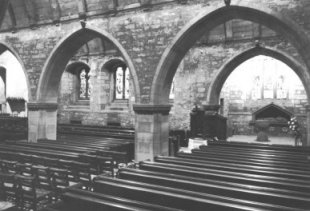
A Brief History of Our Church

CORSTORPHINE OLD PARISH CHURCH
|
|||||||||||
|
|||||||||||
|
He dedicated his chapel to St. John the Baptist. It is not know exactly how long this church had been in existence but reference is made to it in a Holyrood Charter of 1128. Sir Adam died in 1405 shortly after the completion of his chapel, and would have been buried in his chapel. The site of this is not exactly known but would have been within the precincts of the present day church, probably in the area of the south transept or Chancel. His eldest son, Sir John, had succeeded him in most of him in most of his appointments. Sir John, Master of the Household and Lord High Chamberlain to King James I extended the chapel after his fatherís death to include what is now the tower, nave, chancel, vestry and south transept, establishing it as the Collegiate Church of St. John the Baptist in 1429. Within the chancel and south transept are the interesting early Forrester tombs with their carved stone effigies and heraldic panels but the damage and disturbance of five centuries of history make them difficult to identify exactly. Conformation of his foundation of a Collegiate Church was ultimately granted in 1444 by the Pope (Eugenius), and is commemorated in the present by a memorial tablet (see below) to the first provost of the Collegiate Church, Nicholas Bannatyne, who guided the churches development from 1429 until 1473. These two churches functioned side by side until 1593 when under the Reformation the Collage was dissolved and all parish worship was transferred from the old church of St. Mary to the Collegiate building. Following the Reformation when the Collegiate Church became the parish Kirk the chancel arch was infilled and the church re-orientated to face a pulpit at the west end of the nave. The Kirk was extended in 1646 by the addition of a northern transept and a western porch, replacing the ruinous Kirk of St. Mary. The porch is believed to have been built out of stone from the church of St. Mary. |
|||||||||||
|
|||||||||||
|
|||||||||||
|
|||||||||||
|
|||||||||||
|
|||||||||||
|
A spiral stair leads from the tower vault to the gallery and beyond to the bell chamber. Before this gallery was opened out in 1905, the chamber had several purposes, including that of the Kirk Session prison. This is where Betie Watson, being held for witchcraft in 1649 hung herself by the bell rope before she could be tried. The bell was cast in 1728; the original was donated in 1577 by Sir James Forrester, and lasted until then when it was reported to the Kirk Session that it was "rent" and "of no use". The 1728 bell was cast from metal, which included the original bell. This bell is still in use today and except for both World Wars has been rung each Sunday since 1728. |
|||||||||||
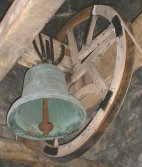 The 1728 Bell in the Tower. |
The baptistery in the south transept has the remains of the original building, which was badly damaged during the 1828 alterations. The early medieval stone font came from Gogar church and was installed in 1955. The bowl, from about 1200, is roughly hewn and originally would likely have been lined with metal. The large south window replaced an earlier nineteenth century memorial window in 1970. The theme being Baptism. In the wall in the baptistery is a six-ringed stone, which at one time covered the burial vault of the Watsonís of Saughton which lies beneath the floor in front of this transept. This memorial slab is dated 1620 and has a long Roman-lettered inscription from Ezekiel, Chapter 37. It was place in this wall in the restoration of 1905, and covers an old doorway. The Watsonís were influential landowners of Saughton House and estate for about three centuries from 1537. |
 The Gogar Font. |
||
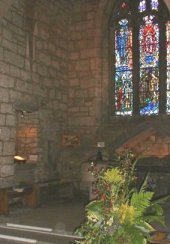 Looking into the Baptistery. |
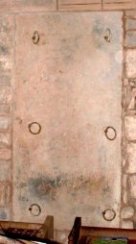 The Watson Stone. |
|||
|
||||
|
||||
|
||||
Corstorphine Old Parish Church is a building of national interest and historic importance. It has existed for over five and a half centuries and although its upkeep is onerous, the congregation are resolved to ensure the survival of this part of our heritage.
The Church is open for services on Sunday at 10.30am, and is open for visitors on Wednesdays between 10.30am and 12 noon and is well worth a visit.
Compiled by K. Aitchison
|
Copyright © 2001-2007 13th Edinburgh Boys' Brigade. Please see our standard disclaimer |


